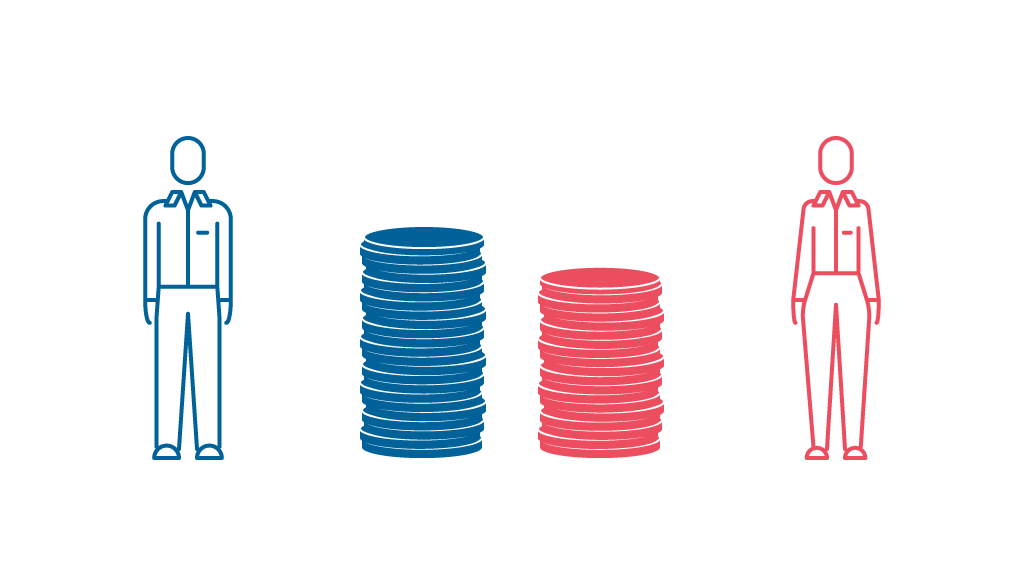

The Manpower Challenge: Germany’s Stubborn Gender Pay Gap
- trienkhaiweb
- 27 January, 2024
- 0 Comments
Germany continues to face challenges in addressing its gender pay gap, a longstanding issue that sees women earning a discouraging 18% less than men on average (2021 data). This figure significantly exceeds the EU27 average of 13%, placing Germany behind many European counterparts in the push for income equality. While Luxembourg has achieved impressive parity, countries such as Estonia (21%) and Austria (19%) still experience substantial pay disparities. Some nations, notably Romania and Slovenia, maintain a much narrower gap of around 2%-3%.
Though Germany’s gap has decreased slightly since 2016, recent years show negligible progress, leaving the country lagging in the pursuit of equal pay. Regional differences add complexity to the issue: Western Germany and Berlin exhibit a troubling 19% gap, contrasting sharply with the 7% disparity in eastern regions. This uneven economic landscape demonstrates the need for targeted action to ensure equitable opportunities and compensation for women across the country.
The persistent gender pay gap highlights the pressing need for comprehensive strategies to tackle deep-rooted inequalities within the German labor market. Priority must be given to implementing policies that promote pay transparency, ensuring equal access to parental leave, and challenging gender-biased career expectations – all critical steps towards fair remuneration for every worker. Additionally, increasing access to educational and training opportunities in sectors traditionally dominated by women, combined with proactive efforts to address unconscious hiring and promotion biases, will be vital in closing the manpower income gap.
Achieving true pay parity requires a holistic approach, one that addresses both immediate earnings disparities and the underlying social and cultural constructs that lead to such inequities. Germany’s future as a truly equitable economic leader depends on sustained commitment to collaborative policies and practices, with the goal of equal pay being an attainable reality for citizens of all genders.

Understanding the Gender Pay Gap: Key Insights
The provided graph illustrates the unadjusted gender pay gap across EU member states in 2021. The EU average unadjusted gap stands at 12.7%, signifying that women in the EU earn an average of 12.7% less per hour than their male counterparts. It’s crucial to remember that this unadjusted figure doesn’t account for potential variations in qualifications, experience, or job type.
Across the EU, member states show a significant range of gender pay gaps. Estonia holds the highest gap at 20.5%, whereas Luxembourg has almost reached parity at 0.2%. Multiple factors contribute to this disparity, including:
- Gender Discrimination: Women may experience lower pay than men despite performing identical work.
- Occupational Segregation: Women tend to work in lower-paying sectors, such as social care and retail.
- Part-time Work: A higher percentage of women engage in part-time work, which often results in lower earnings compared to full-time positions.
- The Motherhood Penalty: Women may face career disadvantages associated with motherhood.

Tackling the Manpower Imbalance: The EU’s Response
The EU recognizes the gender pay gap as a serious issue and is actively implementing solutions to promote workplace fairness, including:
- Pay Transparency Measures: Businesses are increasingly required to disclose employee pay information to promote equity.
- Flexible Working Arrangements: Such options empower women to better manage work-life balance.
- Investment in Childcare: Accessible, affordable childcare helps women return to the workforce after having children.
While bridging the gender pay gap is a complex undertaking, the EU’s ongoing efforts signal their dedication to creating a more just and equitable environment for women in the labor force.
Related articles
Attracting Top Talent in Vietnam’s Competitive Job Market: A Guide for Employers
The Vietnamese job market is dynamic and increasingly competitive. As we head into 2025, skilled professionals are in high demand, and companies are vying for their attention. It’s no longer enough to simply offer a good salary; today’s employees are looking for a comprehensive package that includes benefits, work-life balance, and a positive company culture….
Attracting, Retaining, and Growing Top Talent in Vietnam’s Competitive Market
In today’s rapidly evolving business landscape, securing and retaining top talent is more crucial than ever. For businesses operating in Vietnam, the competition for skilled manpower is fierce. Quinn Vietnam Manpower understands these challenges and offers comprehensive solutions to help your organization attract, retain, and grow the talent you need to thrive in 2025. Understanding…
Avoid These 8 Recruitment Marketing Mistakes
The competition for top talent is fierce in 2025. To attract the best candidates for your organization, you need a strong recruitment marketing strategy. Simply posting a bland job description and hoping for the best won’t cut it. You need to actively engage with potential candidates, build your employer brand, and utilize the latest digital…
Battling Communication Overload: Strategies for Success
In today’s hyper-connected world, communication overload is a growing concern for businesses of all sizes. The constant influx of emails, messages, and notifications can overwhelm employees, hindering productivity and stifling innovation. This is particularly relevant in the dynamic landscape of Vietnam, where businesses are rapidly expanding and the demand for skilled manpower is on the…
Beyond Monthly Meetings: A Guide to Effective Team Communication
While meetings are essential for team collaboration and communication, relying solely on monthly gatherings can be detrimental to productivity, corporate culture, and manpower efficiency. Quinn Vietnam Manpower recognizes the limitations of infrequent meetings and offers insights into more effective communication strategies for 2025. Why Monthly Meetings Aren’t Enough Information Overload and Diminished Engagement: Monthly meetings…
Boost Your Website’s Performance with The Guide to Broken Link Checkers
In the ever-evolving digital landscape of 2025, maintaining a robust online presence is crucial for businesses, especially those in the competitive manpower industry. For Quinn Vietnam Manpower, ensuring your website is optimized for search engines is paramount to attracting potential clients and top-tier talent. One often overlooked aspect of SEO is the detrimental impact of…







